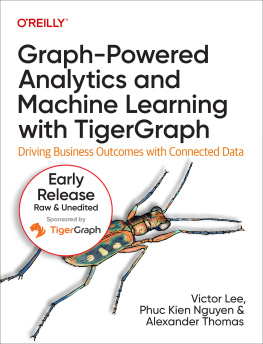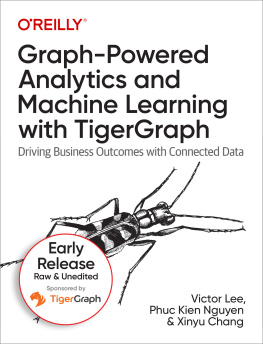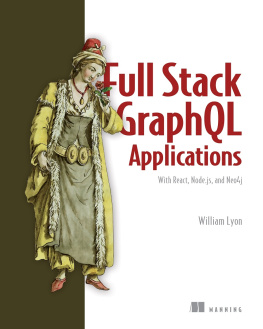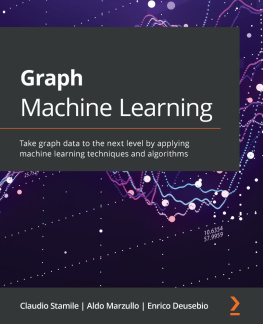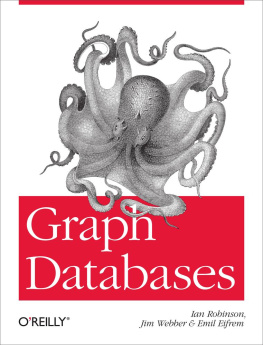Graphs Are Eating The World, And Theres No Going Back
In the three years since we first wrote Graph Databases, our industry has witnessed a fundamental shift in the way in which it views its data assets.
Data, always present in some stratum of innovation, has for several decades delivered only a fraction of its potential, in large part because the technologies at our disposal have forced us to treat it as though it were nothing but isolated islands of middling significance. Graphs and graph databases change this completely.
As vertical after vertical discovers the transformative power of connected data, the breakaway leaders in these industries are stealing an irreversible march on their competitors. Graphs are everywhere, theyre eating the world, and theres no going back.
As I wrote in my foreword to the first edition, this change in perspective started almost two decades ago, when a precocious web search startup challenged the dominance of the market leadersAltaVista, Lycos, Excite, et althrough its application of a simple algorithm that made sense of the way in which web documents are connected.
Today, Google dominates the web search space. In its wake, other industry leaders have asked themselves: What if we take the relationships and connections in our data and reimagined our business along those relationships? What would that look like? The answers to these questions are omnipresent in our online lives today in the form of Facebook, Twitter, and the like.
What was once a specialist and often proprietary means for realizing the opportunities inherent in connected data is now a commodity technology. In the past three years the features, usability, and performance of the worlds leading graph database have matured enormously; awareness and adoption have penetrated far wider, deeper, and more quickly than we could have hoped; and the inventiveness and irreversible impact of introducing graph databases into formerly discrete-data-oriented domains have invigorated and challenged the markets at every turn.
In 2011, we thought the main verticals to adopt graph databases would be software, financial services, and telecom; and largely we were right. However, whats been even more amazing has been the adoption of graph databases outside of those top three verticals.
Weve seen industry after industry being eaten by graphs. In each case, the adoption of graph technology has resulted in better products and more remarkable customer experiences. Companies such as Pitney Bowes, eBay, and Cisco are deploying the graph to solve some of their most mission-critical problems, forcing their competition to catch up or leave the industry. Four of the top ten global retailers today use Neo4j. Behind them, their non-adapting competitors are struggling to make it because theyve failed to adapt.
This ability of graph databases to colonize and radically transform an industry is nowhere more apparent than in the emerging Internet of Things (IoT), a domain which might more aptly be called the Internet of Connected Things, because without the connections, theres no point to it. When you have a lot of connected things, you have a graph-based problem.
In recent years, a major telco equipment provider has entered the IoT space with a product that, embedded inside large telecom networks, sniffs network traffic and builds a model of all the connected devices on the network. If devices in one category are all flashing red at the same time, you can easily determine if its truly because all of them are simultaneously failing or if its because theyre all connected to a firewall and power supply that has just gone out. That level of real-time, predictive analysis is what you can do when taking a connected view of the IoT.
The speed with which such solutions can be developed and put into production is a result of some significant changes to the underlying graph database technology. In 2013 we introduced Neo4j 2.0, marking a big change in the features, usability, and performance of the product. Besides a wholly new visualization tool, Neo4j 2.0 came with an improved data model, whose chief features, labels, optional constraints, and declarative indexescoupled with numerous improvements to the Cypher query languagemake designing and developing a graph database application easier and more intuitive than ever before.
Accompanying this maturation of the technology is an amazing growth in community traction. According to db-engines.com, graph databases have been the fastest growing database category since 2013. Big data is the hottest growing sector in the tech industry, and graph databases are at the absolute nexus of that growth. Graphs are indeed eating the world, and theres no turning back.
I hope this new edition of Graph Databases will serve as a great update (or starting point) to the growing world of graph technologies, and I hope it will inspire you to start using a graph database in your next project, or to apply the technology in even more amazing ways if youve already taken the leap into the graph.
Emil Eifrem
Cofounder of Neo4j and CEO of Neo Technology
London, United Kingdom
May 2015

![Eifrem Emil Graph Databases: [new opportunities for connected data]](/uploads/posts/book/173054/thumbs/eifrem-emil-graph-databases-new-opportunities.jpg)
